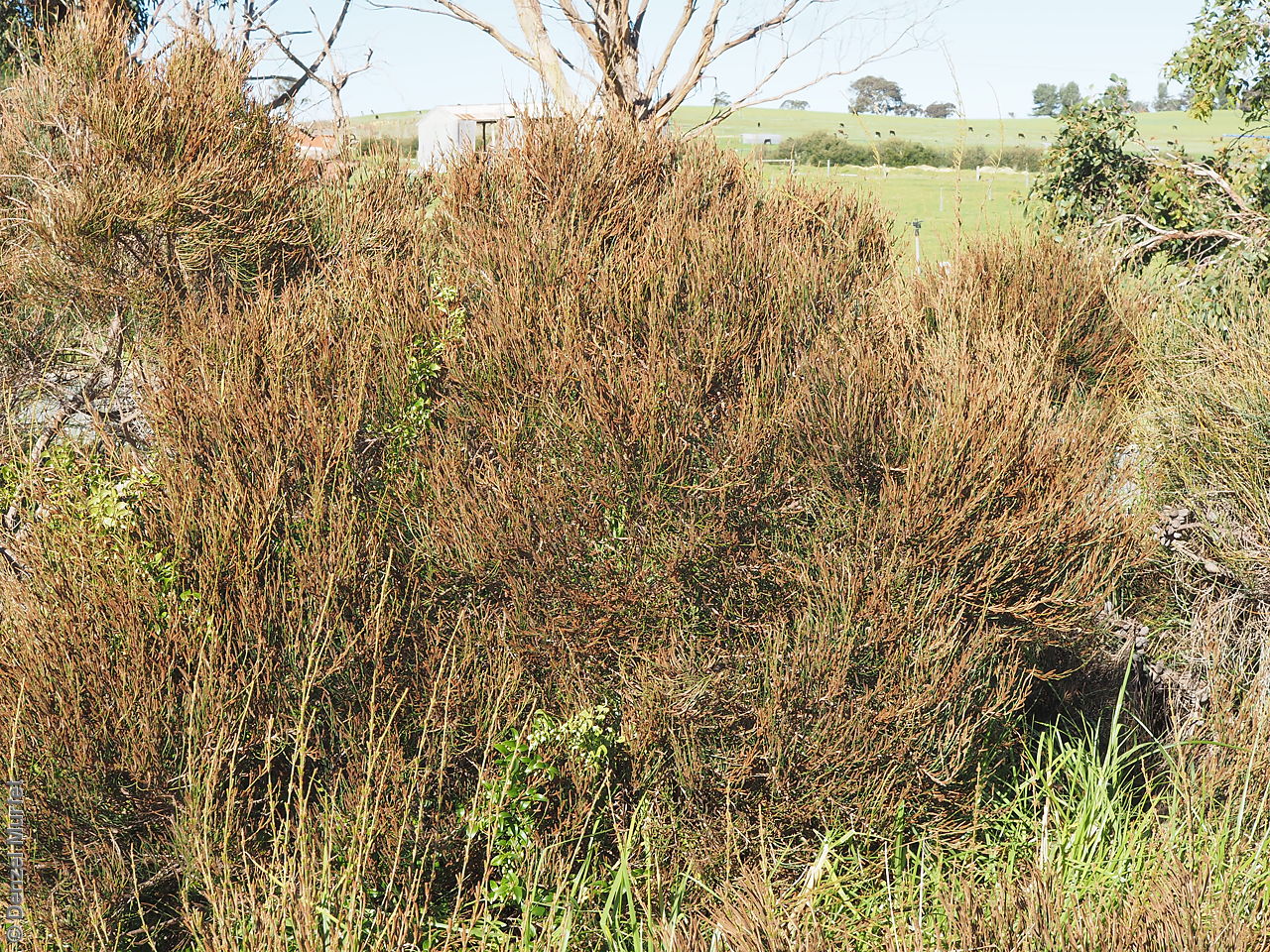
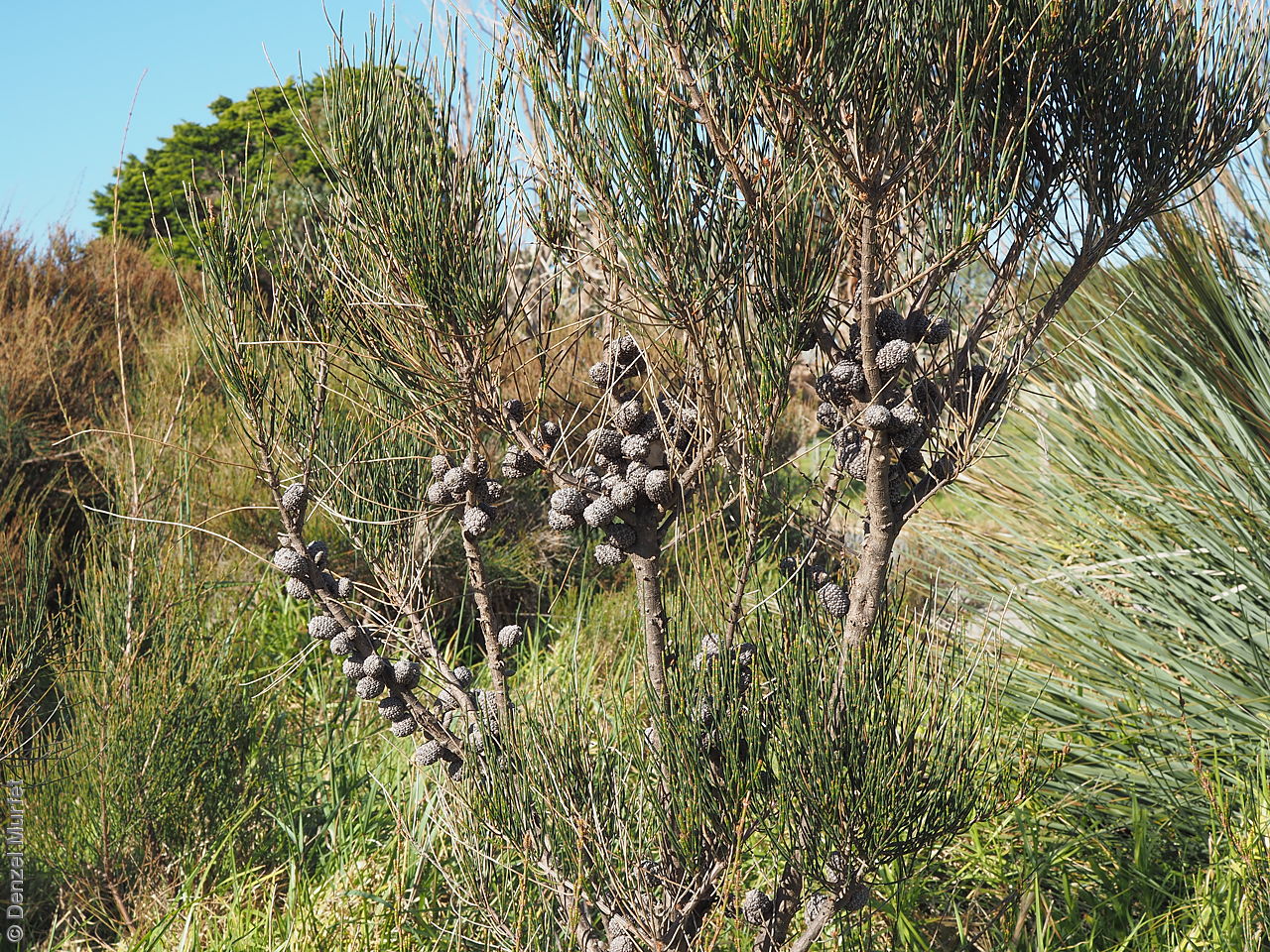
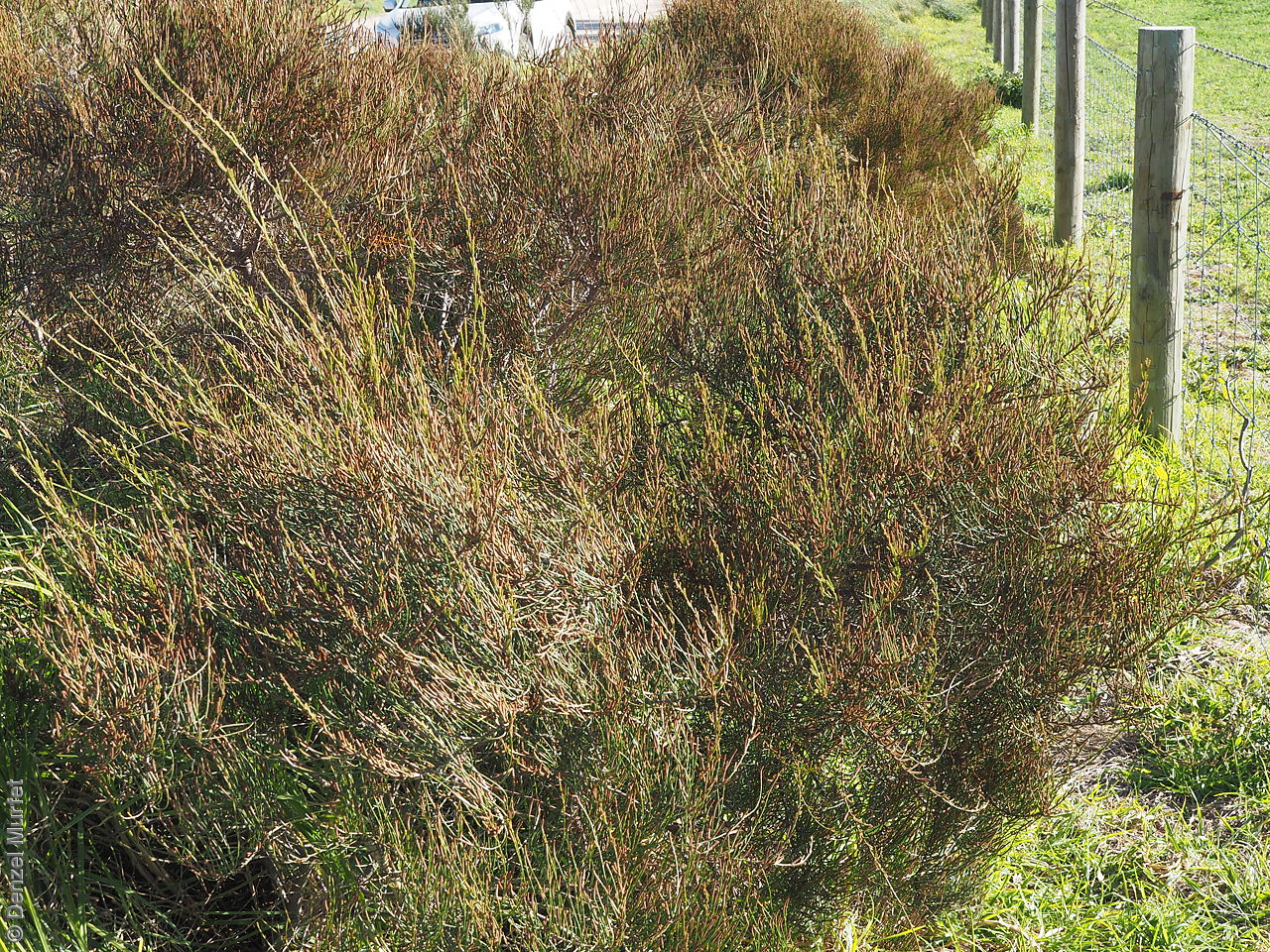
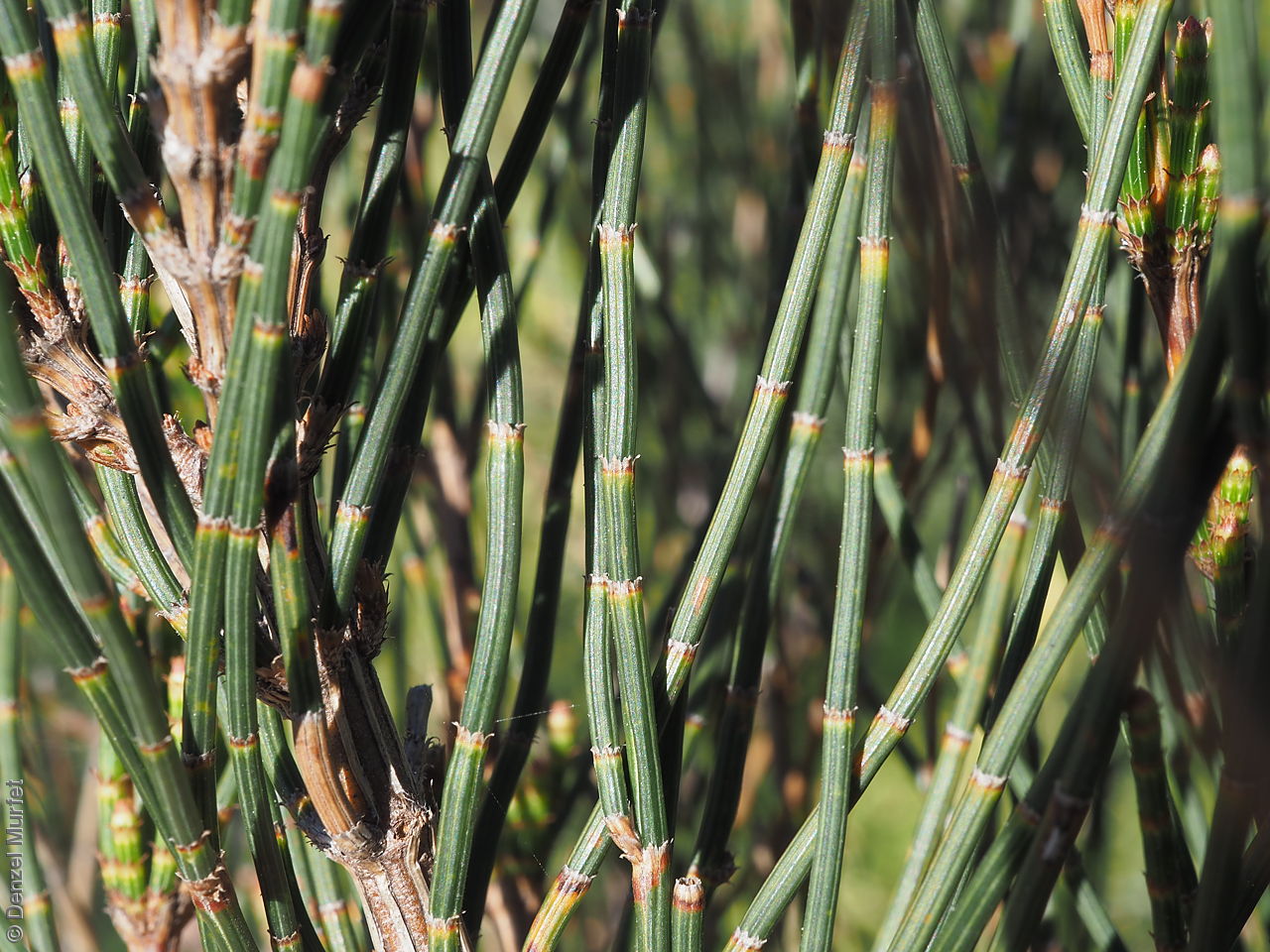

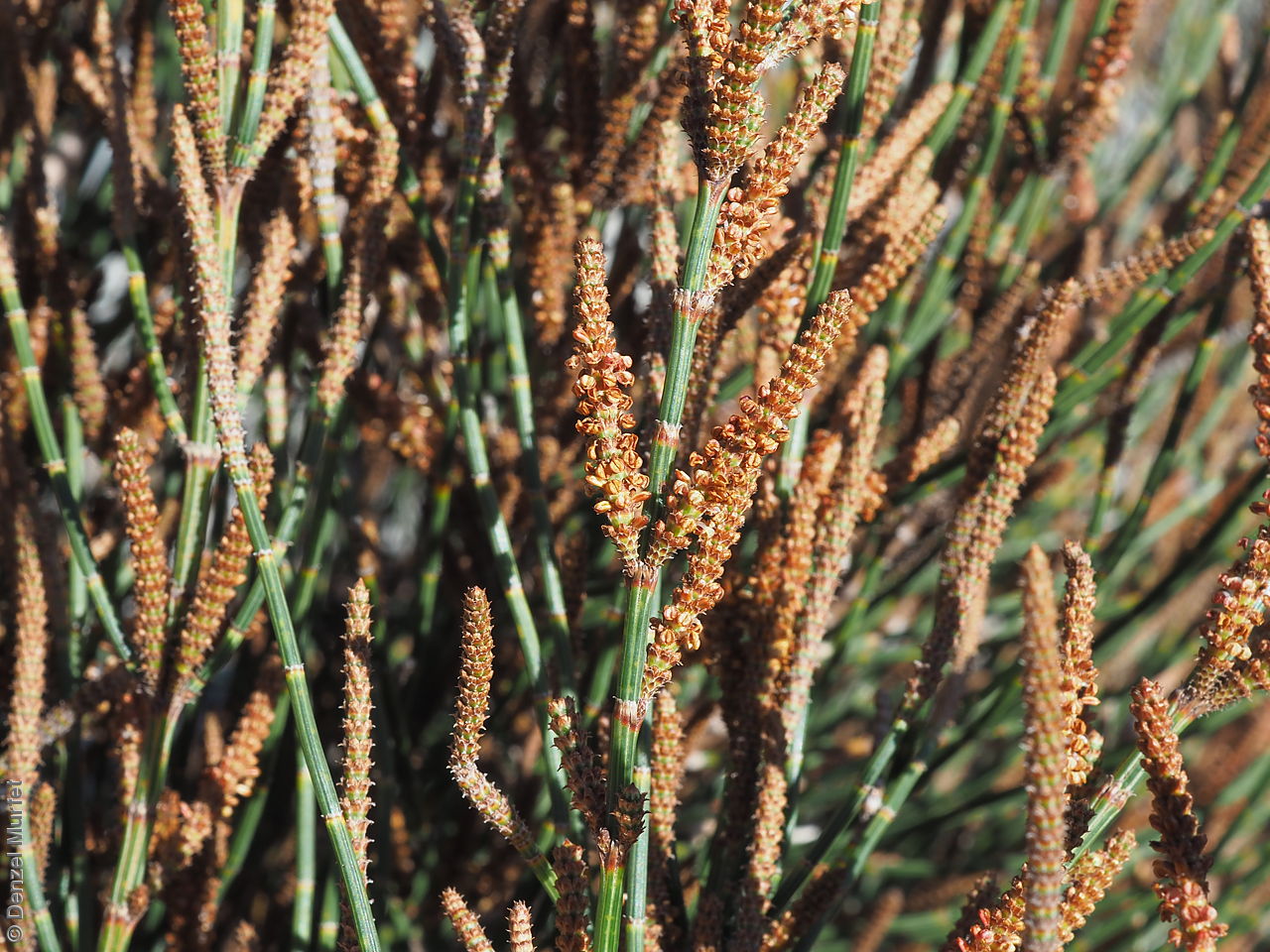
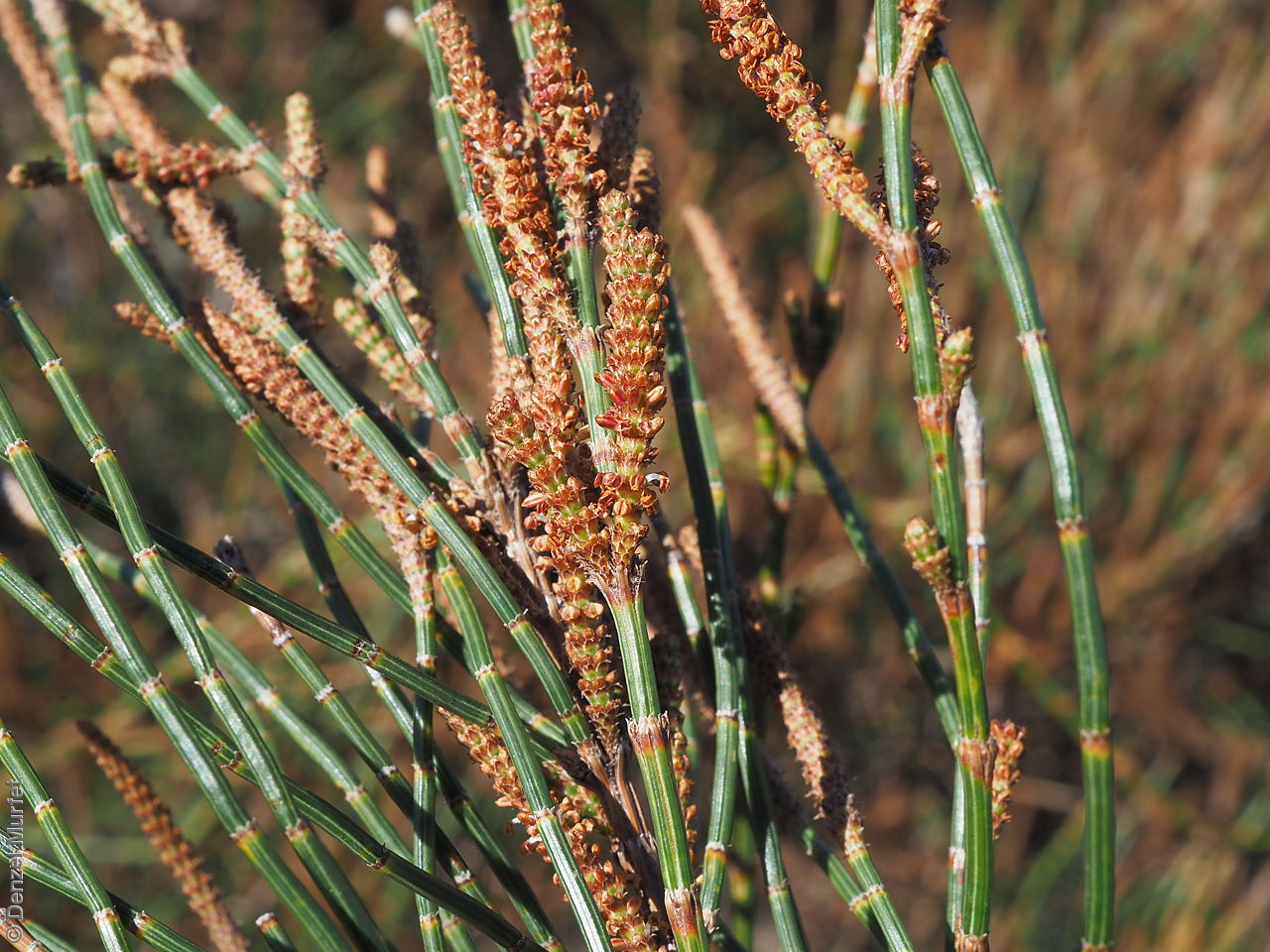
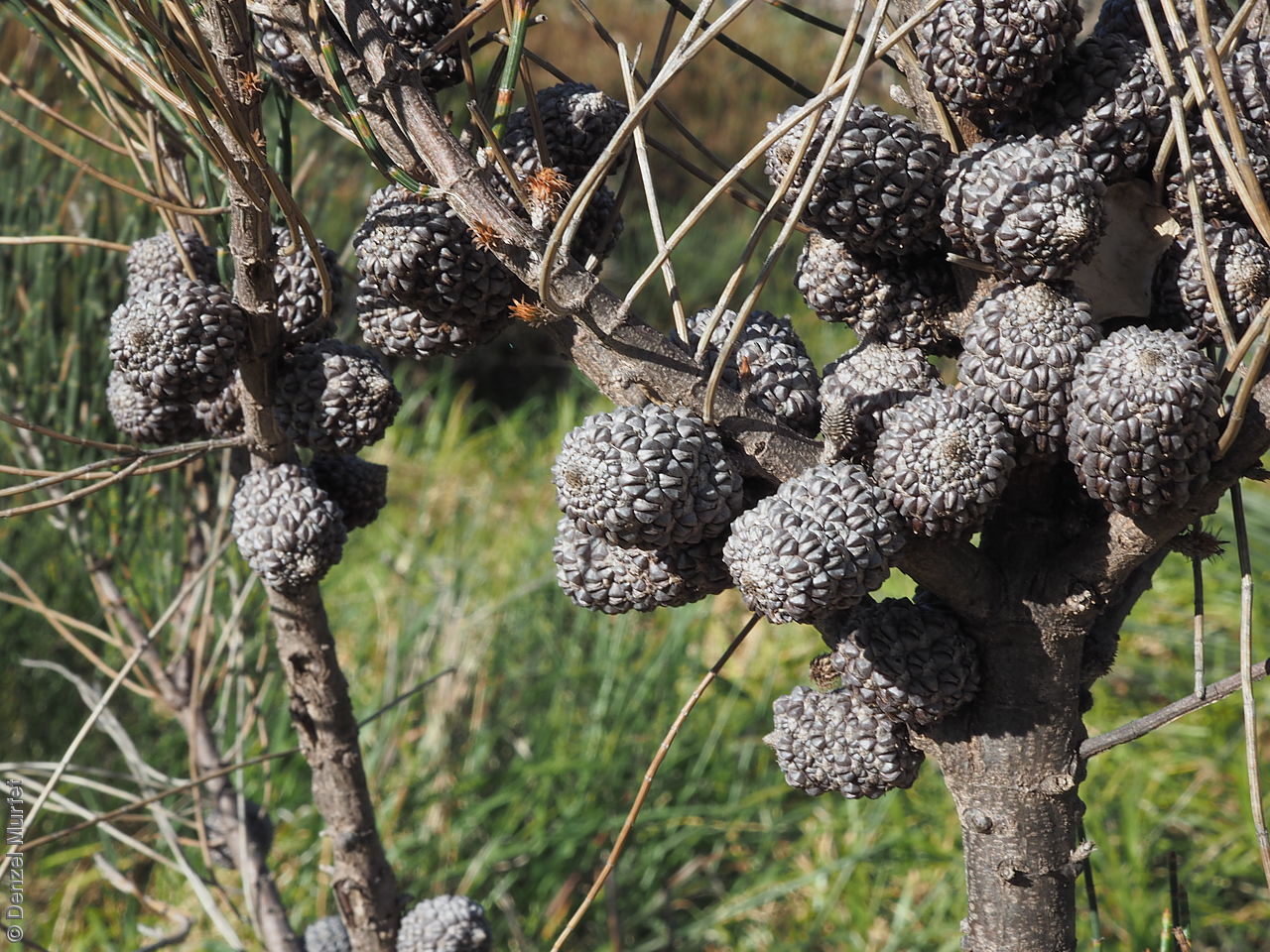
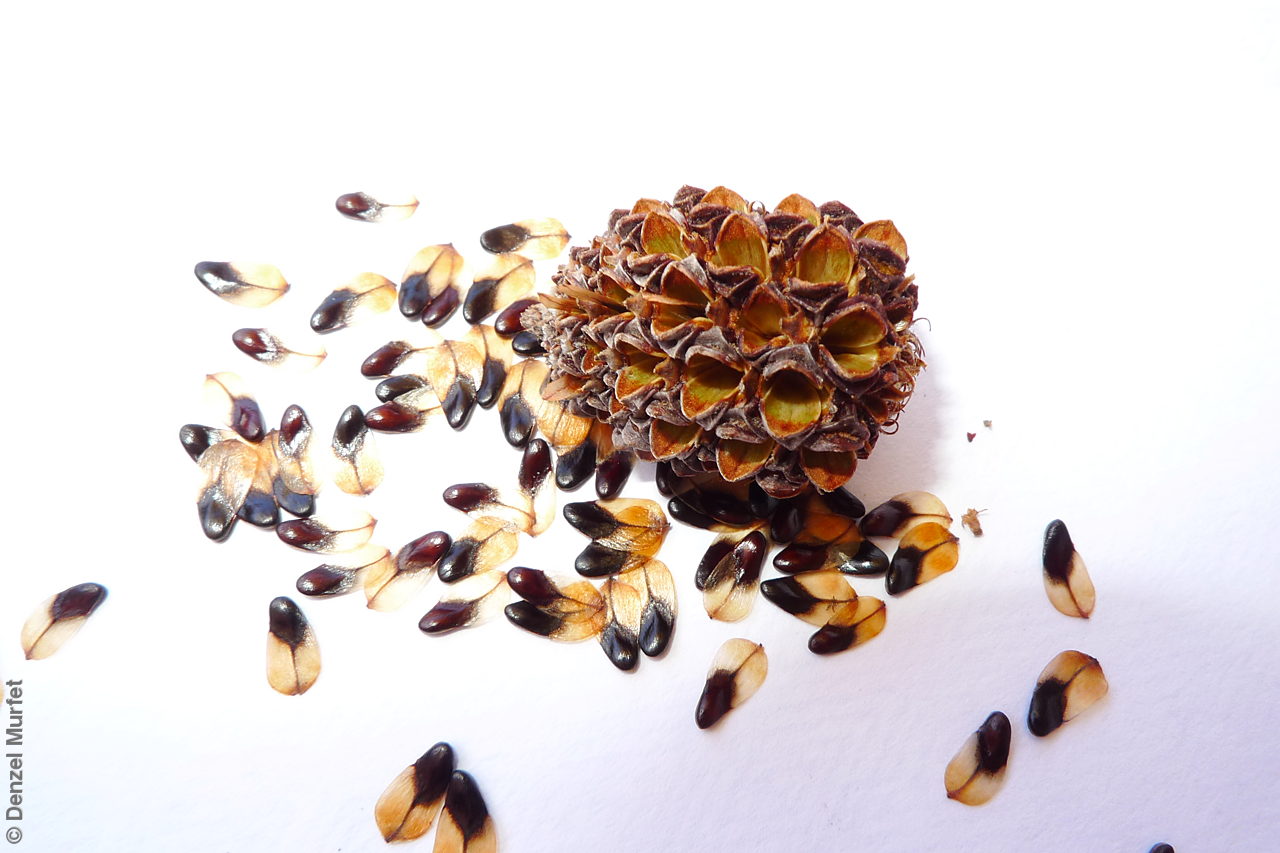
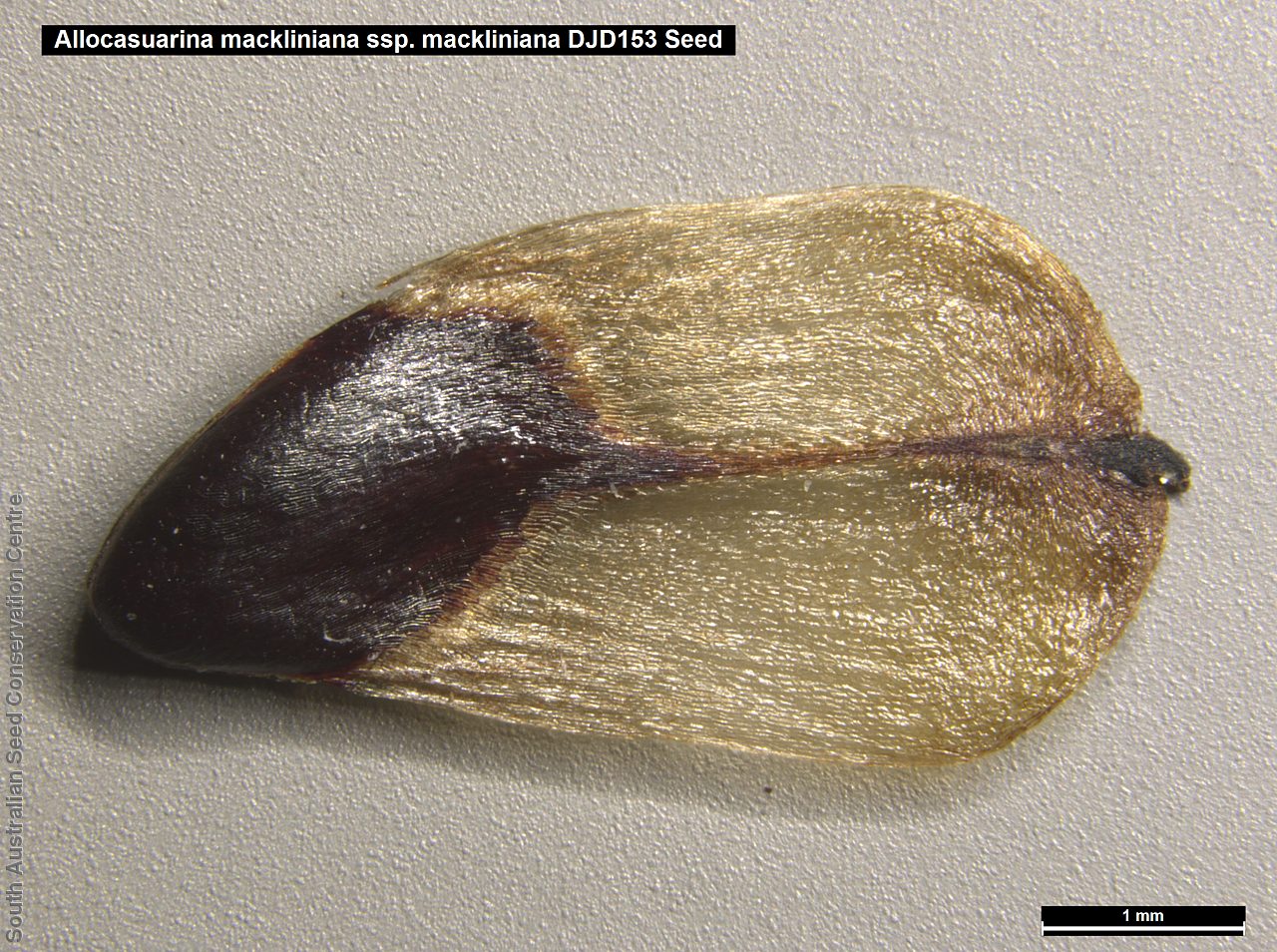
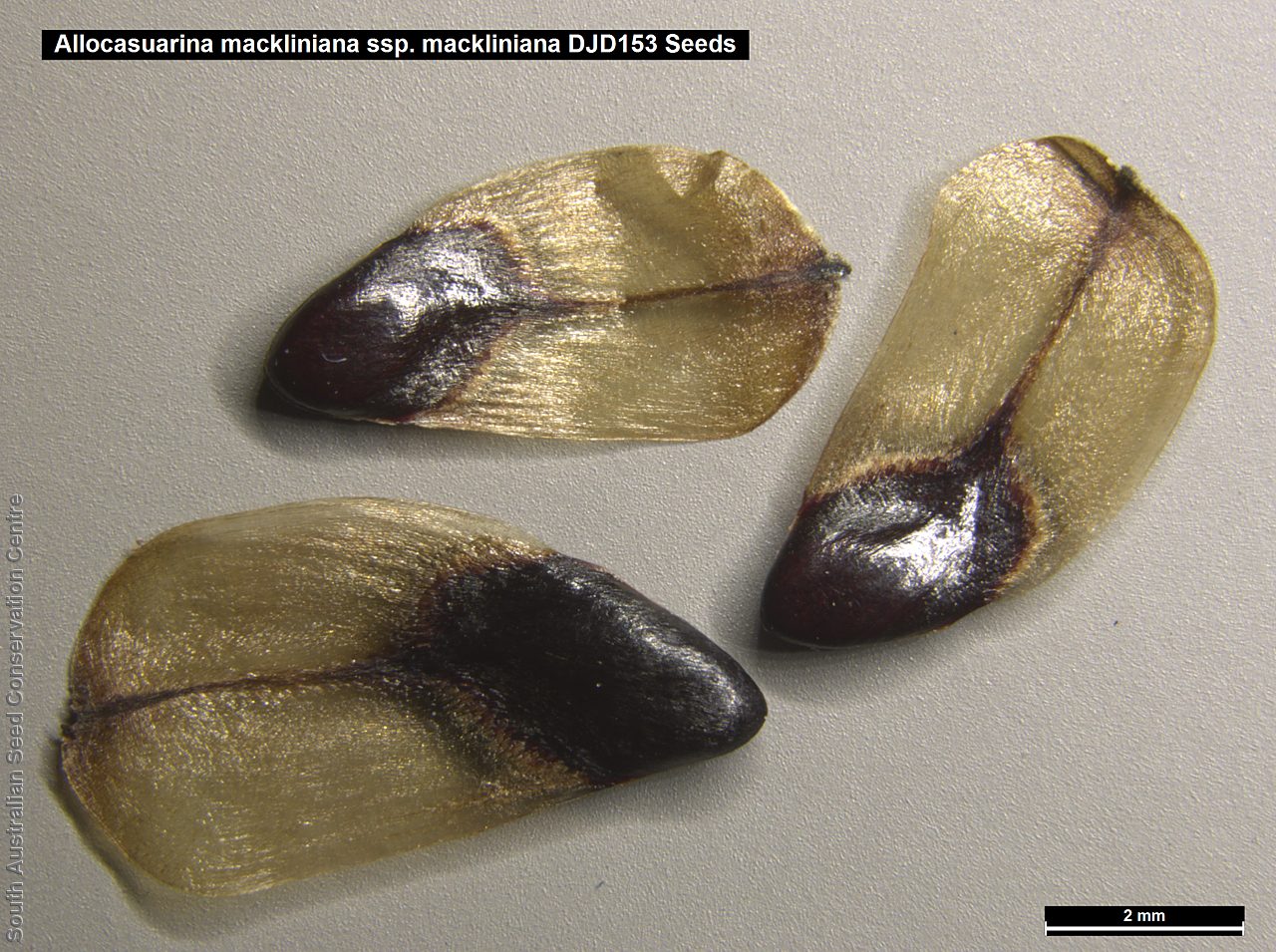


Botanical art
Prior names
Allocasuarina paradoxa, partly
Casuarina paludosa var. robusta, partly
Common names
Coarse Oak-bush
Macklin's Oak-bush
Etymology
Allocasuarina from the Greek 'allos' meaning other or different, indicating the relationship with the genus Casuarina (first used by Rumphius (1743) in allusion to the supposed resemblance of the "foliage" of Casuarina equisetifolia to the plumage of the Cassowary, which is from the Malay 'kesuari', later being latinised as Casuarius). Mackliniana named after Miss Ellen Dulcie Macklin, an Adelaide botanist who published very useful pioneering work on Casuarina.
Distribution and status
Found in the southern Mount Lofty Ranges and the South-east, growing in heath on sandy soils. Also found in Victoria. Native. Uncommon in South Australia. Uncommon in Victoria.
Herbarium regions: Southern Lofty, South Eastern
AVH map: SA distribution map (external link)
Plant description
Dioecious or rarely monoecious shrub 3 m high with smooth bark and ascending stems (look like leaves) to 20 cm long. Stem segment (article) to 17 mm long and 1.4 mm diameter, smooth, with furrows usually glabrous and round ridges; teeth (reduced leaves) 7-10 to 2 mm long, usually overlapping at least at bases. Male spikes very dense and thick, reddish-brown. Female flowers red, single. Cones cylindrical, occasionally broader than long, sessile or on peduncle to 3 mm long with cone body to 22 mm long and 14 mm diameter. This subspecies differs from the other subspecies found in South Australia, A. mackliniana ssp. xerophila which has pubescent furrows when young and the ridge (phyllichnia) nearly flat to slightly rounded. Allocasuarina mackliniana ssp. hirtilinea is restricted to the Grampians in Victoria. Flowering between August and October. Fruits are grey-brown, woody cylindrical cone on short peduncle with numerous valves. Seed embryo type is investing.
Seed collection and propagation
Collect seeds between January and December. Cones can be collected anytime as mature cones remain on the female plant. Collect cones that have closed valves from the lower part of the stem as these are more mature. Place cones in a tray and leave to dry for 2-3 weeks. This will allow the valves to dry and open releasing the seeds. Place the dried cones in a bucket and shake gently to dislodge the seeds. Use a sieve to separate seeds from the unwanted material. Store the seeds with a desiccant such as dried silica beads or dry rice, in an air tight container in a cool and dry place. Seed viability is usually high. Seeds are non-dormant, viable seed should germinate readily.
| Location | No. of seeds (weight grams) | Number of plants | Date collected | Collection number Collection location | Date stored | % Viability | Storage temperature |
|---|---|---|---|---|---|---|---|
| BGA MSB | 7,900 (18.35 g) 7,900 (18.35 g) | 30 | 25-Oct-2005 | DJD153 Southern Lofty | 28-Jul-2006 | 70% | -18°C |
Number of plants: This is the number of plants from which the seeds were collected.
Collection location: The Herbarium of South Australia's region name.
% Viability: Percentage of filled healthy seeds determined by a cut test or x-ray.